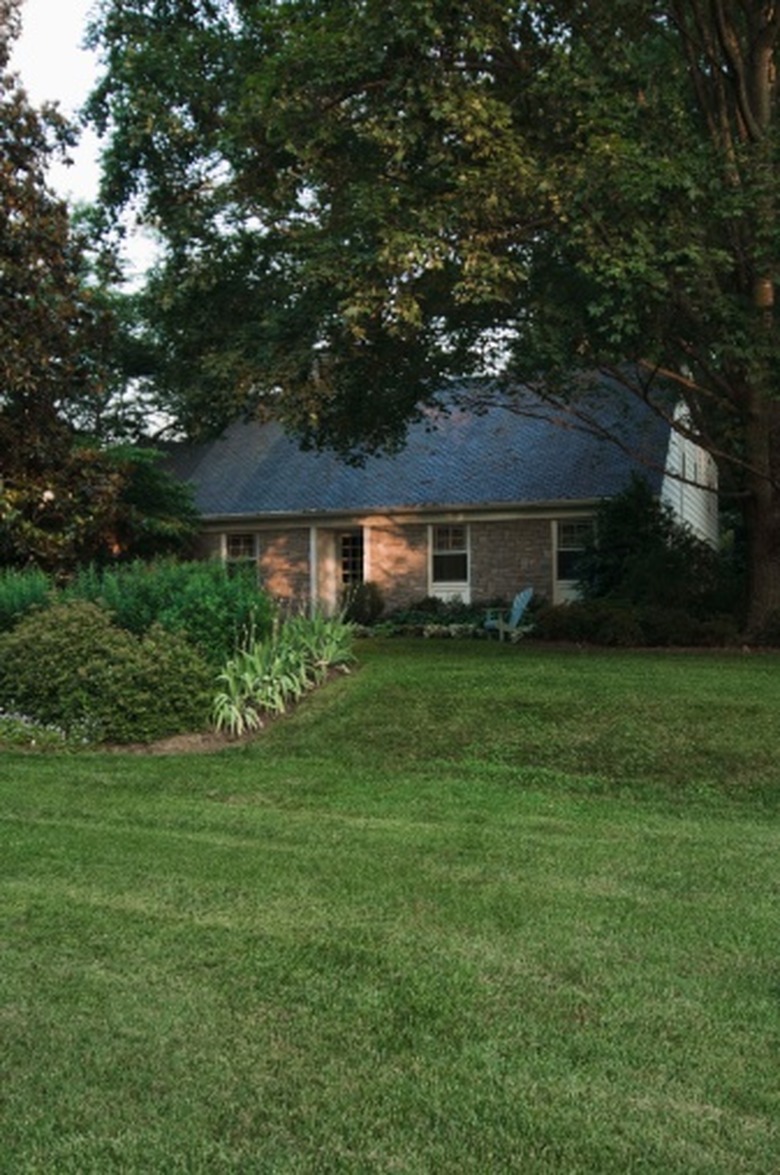When To Fertilize Grass In Florida
Florida's fickle weather patterns often present the home landscaper with many challenges, and maintaining a healthy lawn in Florida requires some careful attention. Homeowners should not experience problems if they follow some easy lawn care tips, paying special heed to fertilizing during the proper seasons. Balanced feedings with a 16-4-8 fertilizer can help guarantee a healthy, pest-free lawn, while the use of iron sulfate will supply a green color when desired.
Types of Grass Grown in Florida
The most common lawn grasses cultivated in Florida are St. Augustine and varieties of Bahia. Bahia grass is the most drought-tolerant and should be cultivated in regions subject to dry spells. St. Augustine is known for its salt tolerance, doing well in coastal areas. The denser soils of northern Florida support centipede grass, which spreads like St. Augustine. Bermuda and zoysia grasses are similar to the fine-bladed examples seen in northern areas of the United States.
Fertilizing St. Augustine Grasses
These popular grasses should be fed every two months during spring and summer. A good schedule is to feed St. Augustine lawns in March, May, July and September. The fertilizer should be used at the rate of 6 lbs. for every 1,000 square feet of lawn. As with all lawns, attention to color rather than aggressive growth will help prevent too-frequent mowing. A height of 3 to 4 inches is recommended for this grass.
Fertilizing Bahia Grasses
Bahia grass comes in varieties such as Argentine, Paraguay 22 and Pensacola. Its feeding requirements are similar to those of St. Augustine, and the grass presents the home landscaper with few problems. The height of these grasses should be maintained similar to that of St. Augustine, keeping it mowed before the grass reaches 4 inches.
Fertilizing Centipede Grass
Though not considered as attractive as St. Augustine or Bahia grasses, this common cover provides a fast-growing, relatively inexpensive lawn. It can be fed in March and July. While subject more than other grasses to the ravages of nematodes, it can be kept healthy with fertilizer. Keep it mowed to a height of not more than 2 inches.
Fertilizing Bermuda Grasses
Ormond, Tiflawn and Tifway are the varieties of Bermuda grass found in Florida. It is recommended that they be fertilized over the course of the year, specifically during January, March, April, June, July, September, October and December. Note that a one-month rest period occurs after a two-month application of fertilizer.
Fertilizing Zoysia Grasses
It is recommended that feedings during March, April, June, September, and November be adhered to. Like centipede and Bermuda grasses, zoysia is prone to attack by nematodes. Meyer and Emerald are two of the varieties of zoysia grass grown in Florida.
Adding Iron Sulfate
Applications of iron sulfate will help maintain a green color in lawns without causing excessive growth. It should be applied twice during the hottest summer month, when heavy rains promote fast growth and relentless sunshine causes lawns to fade. Follow the directions on the package to determine the amount of chemical to be applied. As with any chemicals added to the environment, all lawn enhancers should be used carefully according to local recommendations and restrictions.
